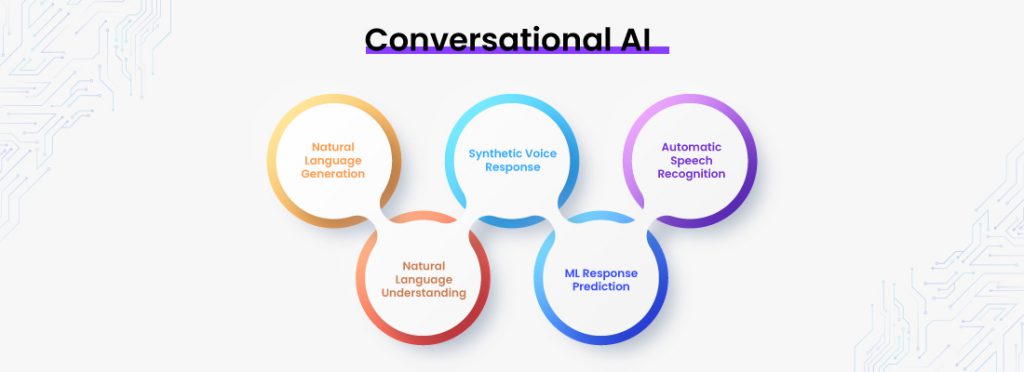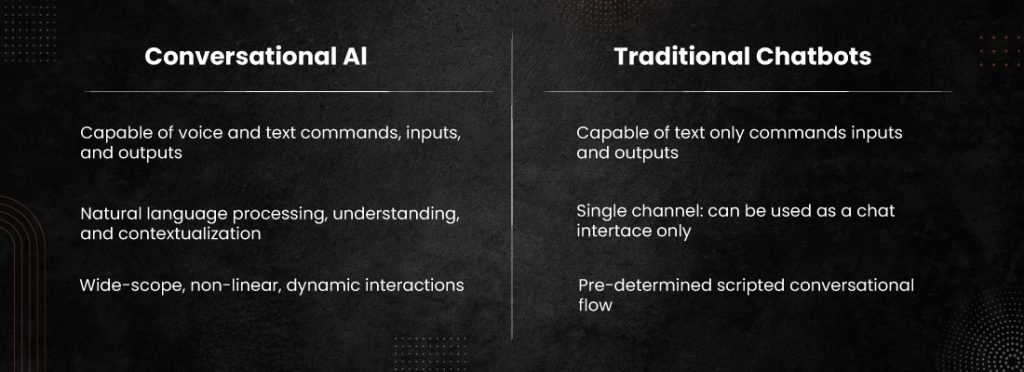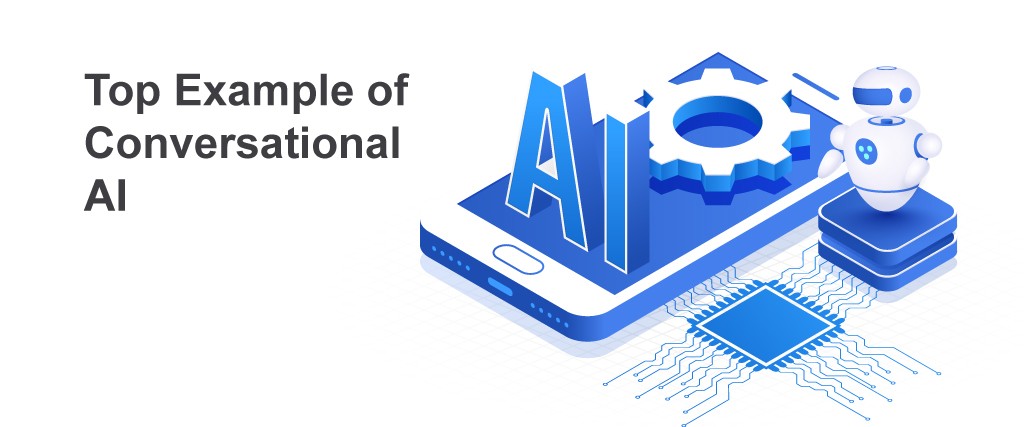Customer interaction has never been more crucial than it is right now.
Your customers can get in touch with you by pressing just one button, whether it be through social media, web chat, emails, or phone calls.
Your customer support personnel may find it more challenging to reply to and address every communication as your customer base expands.
You might eventually not have enough staff to meet the demand for customer service.
Customer contacts are crucial to a business’s success, thus maintaining a connection with customers involves additional strategies for maintaining the dialogue.
Conversational AI can be useful in this situation.
Through a highly effective technology that continuously learns from client contact to deliver a better and faster customer service experience, conversational AI elevates your customer care to the next level.
Conversational AI Examples

Conversational AI simulates human communication with clients using sophisticated machine learning.
Conversational AI may learn to better assist your customers and your support team by giving historical customer experience data and ongoing analysis of recent encounters.
Conversational AI comes in a variety of forms. Each variety, from interactive voice assistants to conversational AI-powered chatbots, may enhance the customer experience and support your company in providing 5-star service to its clients.
Conversational AI can significantly improve how well your company can service its consumers.
Find out about the various conversational AI kinds below.
Conversational AI Chat Bots

If you’ve ever communicated with a chatbot, you know that their programming is restricted, primarily by the number of typed responses you offer them to employ.
On the other hand, conversational AI chatbots provide a richer interaction by actively learning from previous and present user responses.
This kind of chatbot interprets live conversations to offer better support, which boosts customer satisfaction and reduces costs.
A conversational AI chatbot can mine keywords and phrases from a customer’s request or question to provide almost instant answers while also storing new data for later use.
Voice Assistants
Consider Google Home or Amazon’s Alexa as examples of voice assistants when you hear the term.
These assistive technologies help users by using words and phrases that are often used.
Voice assistants can provide a larger range of pertinent answers through your mobile or smart home device by using language understanding.
You may use your voice assistant to ask an increasing number of questions as long as your house or mobile device is online.
Get the most recent news, check the weather, and create reminders.
Your voice assistant can help you more in your daily life the more you communicate with it.
Without the requirement for a real person to be on the other end of the gadget, voice assistants provide that human language sort of interaction.
The ease with which customers can order additional products and request product support frees up your customer service representatives to attend to more urgent requests and demands.
Mobile Assistants
Mobile assistants, which are AI-based assistants primarily utilized by mobile devices, are similar to voice assistants.
Common examples are Samsung’s Bixby and Apple’s Siri, in addition to a few more.
Mobile assistants serve as personal assistants that users of mobile devices may communicate with to complete activities like navigating, adding events to their calendars, looking up restaurants, and more.
Mobile assistants can exploit the information that is being added to the web to provide consumers with better service.
Businesses are becoming interested in the benefits of mobile assistants. Utilizing specific apps connected to your mobile assistant, you can start your car, set your home alarm, and even pay bills.
Mobile assistant users can contact customer service from almost anywhere.
Users can access a wealth of knowledge and resources as long as there is mobile and data service.
Interactive Voice Assistants
By eliminating the requirement for human interaction, businesses may easily give services to clients thanks to interactive voice assistants.
An interactive voice assistant, for instance, may be able to place an order for you when you call a pharmacy to request prescription refills.
The voice assistant will ask for your name and the details of your prescription.
Similar services are provided by many banks to let consumers manage their accounts, make payments, and get account statements.
The use of interactive voice assistants lowers labor expenses and frees up customer support representatives’ time for more complex requests.
With the help of this time- and money-saving technology, your business can do more to expand and serve more clients more quickly.
Frequently Asked Questions on Conversational AI
Does Google Assistant represent conversational AI in any way?
Yes, a conversational AI example would be Google Assistant.
Users may engage with Google Assistant—as well as similar assistants like Apple’s Siri, Amazon’s Alexa, and Samsung’s Bixby—in an almost limitless number of ways to get help and information.
These conversational AI are more powerful and intelligent than standard chatbots, giving your consumers a better, more engaging user experience.
Is Alexa a Conversational AI?
Alexa is, in fact, a conversational AI.
To give more pertinent information and better serve clients, Alexa employs machine learning to forecast their wants and requests in the future.
Instead of using a standard chatbot, customers can enjoy more personalized experiences using Alexa.
Furthermore, users frequently find conversational AI like Alexa to be more engaging.
Final thoughts
A conversational AI might be of interest to your company.
One of the top providers of conversational AI chatbots, Yugasabot is aimed at assisting your clients throughout the full customer journey.
Any industry can benefit from our conversational chatbot, which can help you serve more clients more quickly.
Read More: Conversational AI Trends







